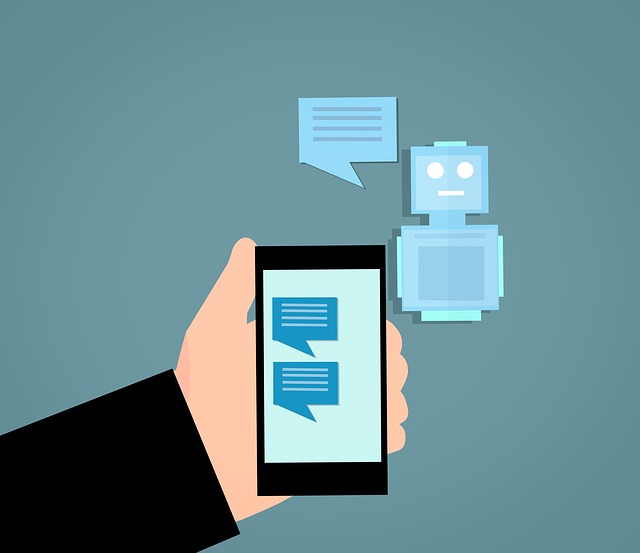 Everyone, it seems, is developing chatbots. Many experts predict chatbots will revolutionize marketing, public relations, and customer service. Some say the revolution is already underway, as creative new applications proliferate. The chatbot market, valued at $190.8 million in 2016, is estimated to reach $1.25 billion by 2025, according to Grand View Research.
Everyone, it seems, is developing chatbots. Many experts predict chatbots will revolutionize marketing, public relations, and customer service. Some say the revolution is already underway, as creative new applications proliferate. The chatbot market, valued at $190.8 million in 2016, is estimated to reach $1.25 billion by 2025, according to Grand View Research.
Chatbots are software applications that mimic human interactions and answer questions on messaging services such as Facebook Messenger, WhatsApp, Viber and WeChat, using text as a method of communication. The software apps offer important advantages, especially for customer service.
They reduce business costs and allow brands to communicate with more customers. Unlike human customer service agents, they’re on duty day and night. That helps expand the brand’s marketing and sales funnel. Most importantly, chatbots help usher customers to completing the sale. Many customers, especially younger, digital natives, prefer to communicate through the apps rather than by phone or email.
“Implementing a well-developed chatbot auto-response system for the most common questions from your niche or industry can help to improve response time and customer satisfaction, and ensure customer retention,” notes Gary Vela, CEO of digital marketing agency Web Daytona, in Forbes.
How to Build a Chatbot
There are two types of chatbots, explains software developer Anadea. Simple chatbots are programed to respond to questions based on keywords they contain. If the user’s question lacks a keyword, they don’t understand.
Smart chatbots use artificial intelligence to analyze customers’ questions and comments to learn and improve over time. However, improvement takes time. Customers often tolerate poor experiences during the learning stage. Those kinds of poor customer service experiences present one of the largest risks.
They often fall short of human-like conversation, misunderstand customers or forget what the customer just told them. In addition, they say they’re a bot in the first place, and customers have no easy way to reach a human account rep. PR teams may be busy protecting and restoring the brand’s reputation from unsuccessful chatbots.
Anadea recommends these steps:
- Define the goals. What should your chatbot do? Clearly indicate the list of functions your chatbot needs to perform. (In programmer lingo, these are the “requirements and specifications.”)
- Choose a channel to interact with your customers. Be where your clients prefer to communicate — your website, mobile app, Facebook Messenger, WhatsApp or other messaging platform.
- Choose the creation method, either ready-made software or building a custom bot from scratch. Anadea recommends business owners hire a programmer experienced in creating chatbots. Others suggest that staff programmers can use tools, such as Dialogflow, Google service or Wit.ai, owned by Facebook. Some even suggest that non-programmers can build chatbots using the tools. Our recommendation: Don’t try it. Customer experience is too important.
- Create, customize and launch. Describe the algorithm of its actions, develop a database of answers and test the work of the chatbot. Double check everything before showing your creation to actual customers or prospects.
Examples of Chatbots
Chatbots typically answer common customer service questions, but organizations are developing increasing creative uses for the apps.
Skincare brand Pond recently launched an AI chatbot that matches people to the right skin products and found that chatbot delivered better results than its existing digital channels.
The nonprofit Direct Relief built a chatbot after Hurricane Harvey demolished Texas in 2017 to handle the deluge of Facebook Messenger requests. The bot dramatically cut response times and can flag requests needing human assistance. It’s now available free to other nonprofits.
Flower delivery service 1-800-Flowers created a chatbot that helps users send flowers and gifts directly from the messaging app, instead of through the company’s online store, points out Square Capital. The bot also makes gift suggestions, processes orders, and sends shipping updates.
In partnership with a company called ModiFace, beauty retailer Sephora created a Facebook Messenger chatbot called ColorMatch that helps customers find lipstick that matches the shade in a photo they’ve uploaded. Customers can also upload a selfie photo to “try it on.” Sephora Reservation Assistant books appointments to reserve a makeover at Sephora stores. The appointment bot has achieved an 11% higher conversion rate compared to other channels used to book in-store makeover appointments.
Swedish fashion retailer H&M quizzes customers about their style preferences, and then offers clothing recommendations tailored to their tastes. Users can also share a piece of clothing they like, and the bot will use it to select a complete outfit.
Bottom Line: Besides improving customer service, chatbots can recommend products and complete sales. Businesses can benefit from chatbots, but poorly designed programs will frustrate customers, tarnish the brand’s reputation and likely lose business.
William J. Comcowich founded and served as CEO of CyberAlert LLC, the predecessor of Glean.info. He is currently serving as Interim CEO and member of the Board of Directors. Glean.info provides customized media monitoring, media measurement and analytics solutions across all types of traditional and social media.




